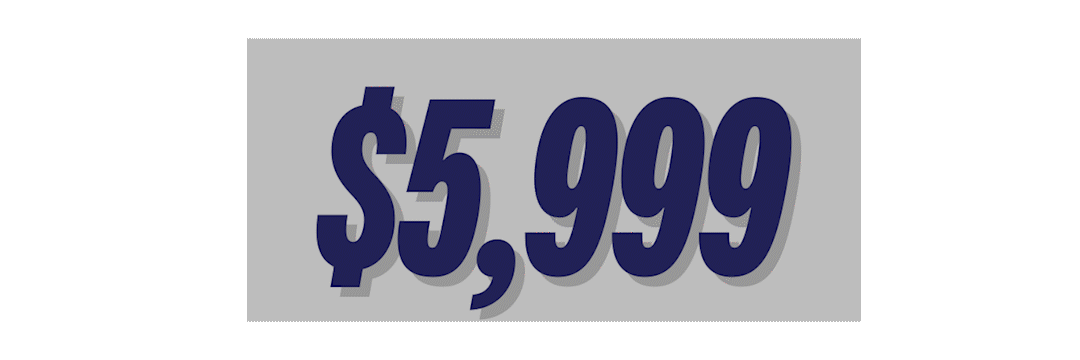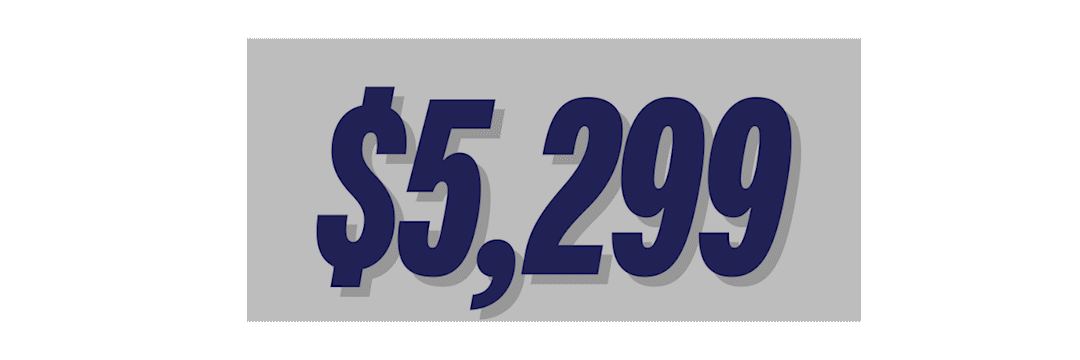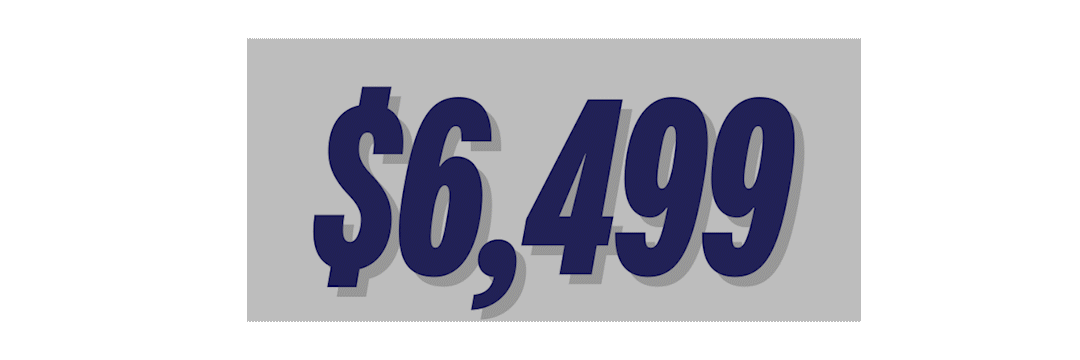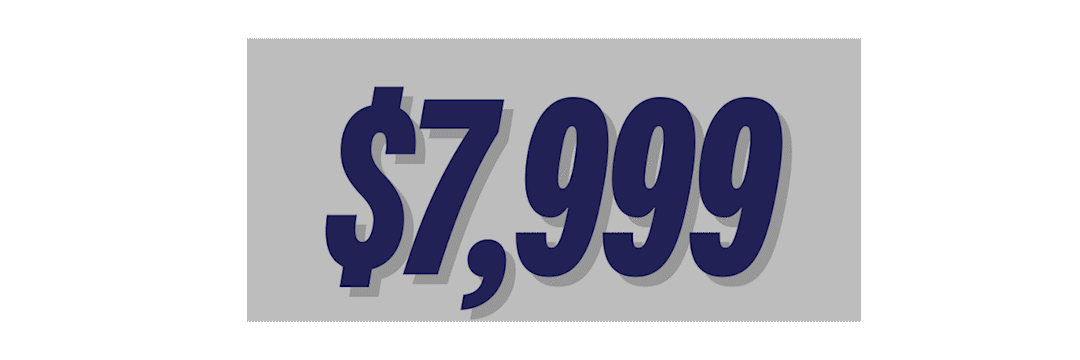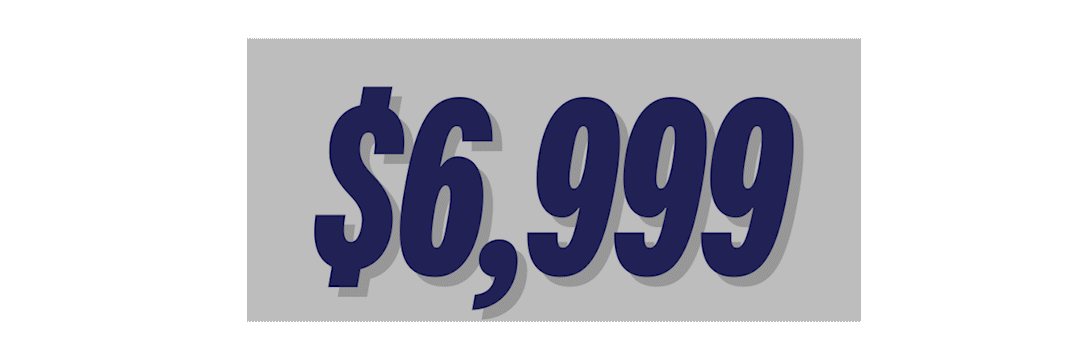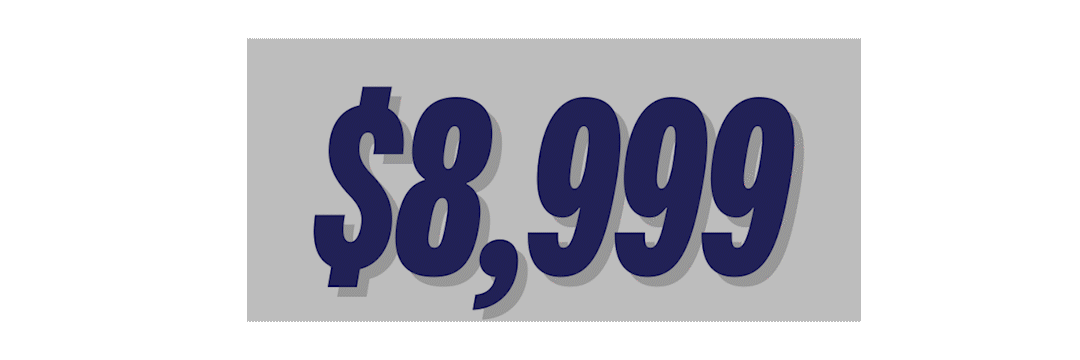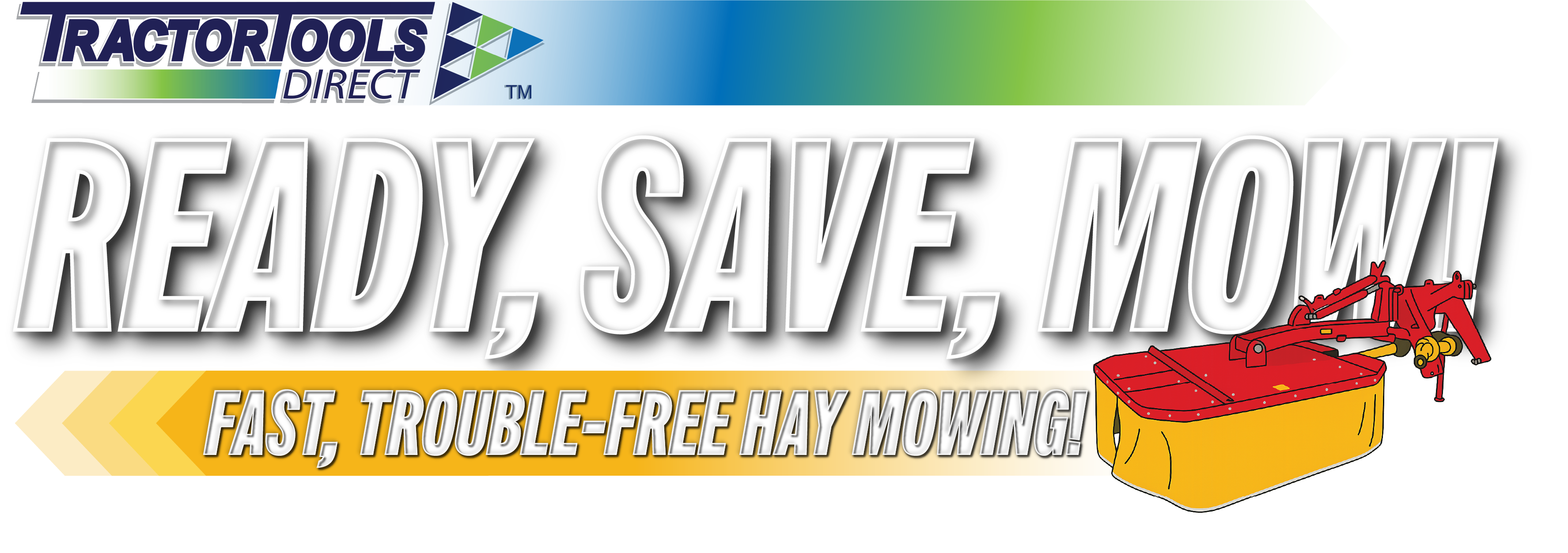





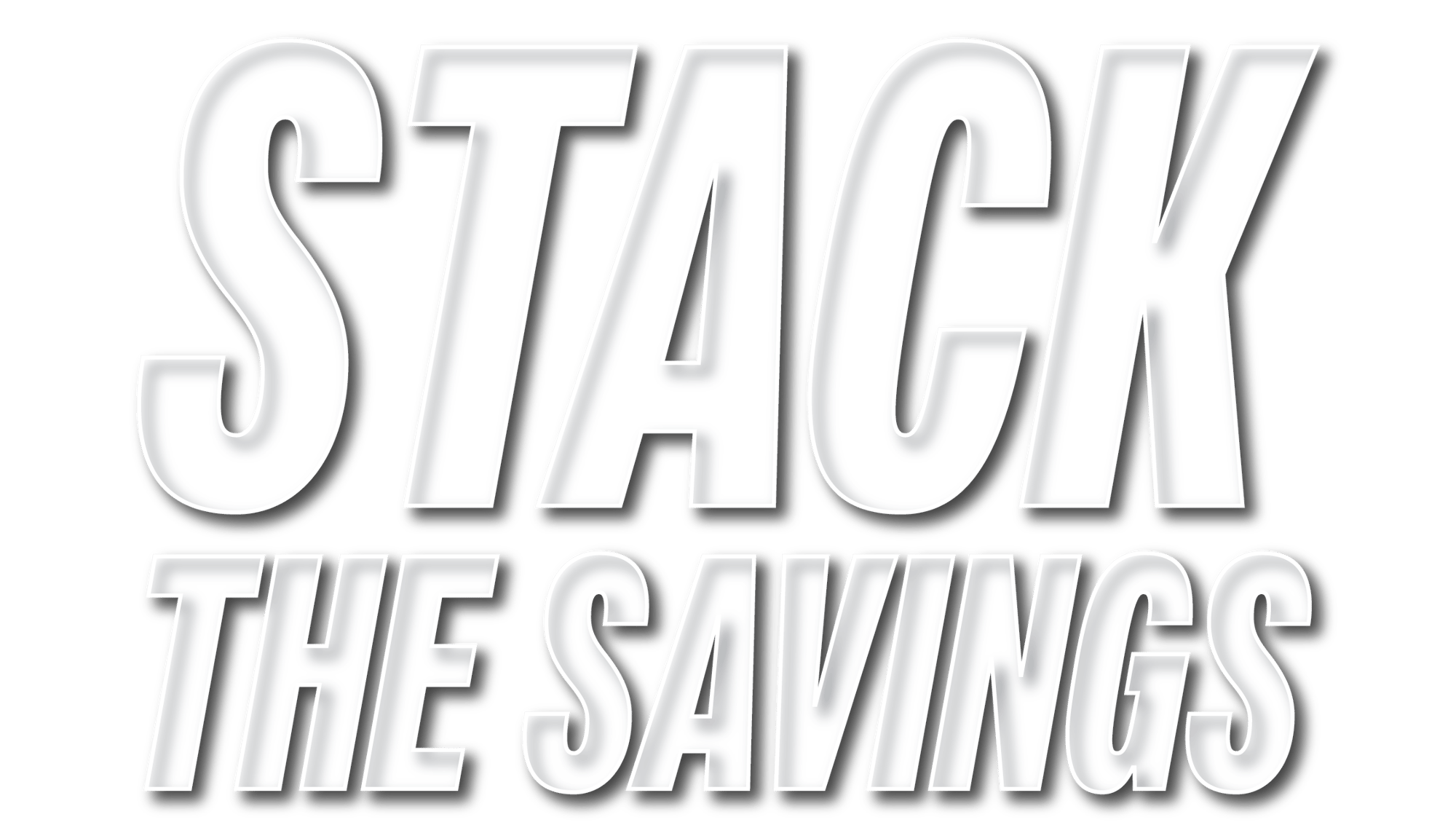
-
Lifetime Technical Support
When you buy from us, you're not just getting a piece of equipment—you’re gaining a lifelong partner. Our team of knowledgeable technicians is available to provide expert guidance and troubleshooting support for as long as you own your attachment. Whether you're dealing with a tricky installation or a tough job in the field, we're just a call or click away.
-
Over a Decade of Experience
With more than 10 years in the agriculture equipment industry, we’ve earned the trust of farmers, ranchers, and homesteaders across the country. Our deep product knowledge and field-tested insight ensure that we recommend only the right tools for your tractor—and your land.
-
Ships All Over the U.S.
Whether you're in the rolling hills of Pennsylvania or the wide plains of Texas, we’ve got you covered. We offer fast, reliable shipping to every state in the U.S., so you can get the attachments you need delivered straight to your door—no matter where you farm.
-
Parts in Stock
Downtime costs money. That’s why we maintain a robust inventory of replacement parts for every product we sell. No waiting weeks for parts to ship from overseas—our in-stock parts ensure that repairs and maintenance are fast, easy, and efficient, so you can keep your operations running smoothly.
-
2-Year Premium Warranty
Enjoy peace of mind with our industry-leading 2-year premium warranty on all compact tractor attachments. This comprehensive coverage protects your investment from manufacturing defects and ensures you're supported long after your purchase. We stand behind our products with confidence, so you can work your land without worry.
-
Free Support by Trained Staff
Have questions? Need help choosing the right implement? Our support team is trained specifically in compact tractor equipment and is ready to assist—at no extra cost. From first-time buyers to seasoned landowners, we provide clear, helpful answers that make your buying and ownership experience better.
Contact

Yes! Cutting Height Matters in Haymaking
When it comes to haymaking, one of the most crucial decisions a farmer or producer must make is the cutting height. The height at which you cut your forage plays a significant role in the overall quality and yield of the hay, as well as the long-term health of the pasture. Below, we’ll explore why cutting height matters, highlighting the benefits of getting it right and the risks of cutting too high or too low.
Impact on Forage Quality
Cutting height directly influences the nutritional value of hay. Forage cut at a higher height typically contains a higher percentage of leaves, which are the most nutritious part of the plant. Leaves are rich in proteins, vitamins, and minerals, making them a crucial part of the diet for livestock. Conversely, cutting too low often results in a greater proportion of stems in the hay, which are more fibrous, less digestible, and lower in nutrients.
Maintaining an optimal cutting height helps ensure a more balanced nutritional profile, which is particularly important for animals that rely on hay as a primary food source.
Encouraging Forage Regrowth
Another key reason for paying attention to cutting height is promoting healthy regrowth of the forage stand. When vegetation is cut too short, it can damage the plant’s root system, leading to slower regrowth and potentially weakening the pasture. This could also make the pasture more susceptible to weeds, which can outcompete the grass for nutrients and sunlight.
By cutting at the recommended height—typically around 3-4 inches above ground level for most grasses—you allow the plant to maintain its root reserves, giving it a better chance of regrowing quickly and healthily after each cut. This helps to maintain a sustainable, productive pasture over time.
Minimizing Soil Compaction
Cutting grass too close to the ground can also affect soil health. If the mower is set too low, it can lead to soil compaction, especially in wetter conditions. This restricts water drainage and root development, making it harder for plants to thrive. By setting your cutting height correctly, you reduce the risk of disturbing the soil structure, promoting better root penetration and overall pasture vitality.
Preserving Pasture Biodiversity
Pastures are often home to a variety of plant species. Cutting too low can reduce the chances of these diverse species thriving, especially those that may be slower to regrow or less tolerant of frequent mowing. By adjusting the cutting height to allow some plants to survive longer, you support biodiversity, which can have positive effects on both pasture resilience and overall ecosystem health.
Optimizing Hay Yield
While cutting at a higher height may seem like it results in less hay per acre, it can actually optimize long-term yield. If you continually cut too short, the grass will struggle to regrow, leading to smaller harvests over time. By maintaining an appropriate cutting height, you ensure that the grass has the energy it needs to regenerate and produce multiple harvests throughout the growing season.
Reducing Weed Competition
A properly maintained cutting height helps keep weeds at bay. Taller grass shades out weeds, reducing their ability to thrive. Cutting grass too short leaves the soil exposed, creating an opportunity for weeds to take root and spread. In contrast, by ensuring that grass is cut at a moderate height, you give your pasture the upper hand in competing with unwanted vegetation.
Conclusion
The height at which you cut your grass for haymaking is much more than just a technical decision—it has far-reaching consequences for the quality of the forage, the health of your pasture, and the long-term sustainability of your haying operation. By cutting at the right height, you can enhance the nutritional value of your hay, encourage better regrowth, protect the soil, and maintain a thriving, diverse pasture. Whether you're a small-scale farmer or managing a large operation, getting the cutting height right is an essential aspect of successful haymaking.
Ibex Drum Mower Lift Kits
Are you needing to raise the cutting height of your pastures in your hay-making process? Be sure to check out the lift kits for our Ibex Drum Mowers. Lift kits are an excellent addition to your haymaking equipment, allowing for easy adjustments to cutting height. These kits consist of spacers and plates that serve to raise or lower the mower to accommodate different types of forage, soil conditions, and terrains. This flexibility helps ensure that you’re cutting at the optimal height, whether you're working on uneven ground or trying to avoid damaging delicate plants.
Lift kits also make it easier to prevent over-cutting, which can damage the root systems of your grasses and hinder regrowth. By providing more precise control over the cutting height, lift kits help maintain pasture health and improve the overall efficiency of your haying operation.
These add-on kits are sized for each of our mowers and consist of two plates which attach to the bottom of the drums to increase cutting height. They are easy to install and will give your mower just the boost it needs to protect your forage and improve your hay yields. For more information on these kits or our other haymaking equipment, give us a call at 260-BALE-HAY today!
Stop Cutting Hay with a Bush Hog or Flail Mower — A Drum Mower Wins Every Time
Here at Tractor Tools Direct we field quite a few phone calls, chats, and emails asking about different types of mowers and their uses, more specifically, asking which type can be used for hay production. This blog will discuss the differences between three types of mowers – drum mowers, which are a fantastic choice for cutting hay, and bush hogs and flail mowers, which are not. However, the latter two definitely have their own important roles on a small farm.
A Drum Mower is a Hay Mower.
A drum mower’s purpose is to cut the stem of a crop at its base leaving the cut plant as unscathed and complete as possible. This allows for easy pick up by a hay baler with little material loss. A drum mower’s cutting action is gentler than the other two types of mowers, preserving the nutrient dense leaves of forages, especially legumes.
The long, consistent windrows created by a drum mower are meant to be harvested, not left in the field to decompose. While these windrows are easily raked or baled, they may hinder or even prohibit future pasture growth if not collected. Furthermore, a drum mower is not recommended for tough jobs like mowing brush or severely overgrown woody areas, due to its smaller, free swinging blades.
A Bush Hog is a Brush Mower.
Also known as a rotary cutter, a bush hog is great for clearing saplings, tall weeds, and thick overgrowth. However, it is not designed to preserve the cut material as a hay mower would. A bush hog shreds and tears forage, as well as piling it in irregular clumps as it comes out the back of the machine. As a result, if used to cut hay, the hay will not dry evenly. Furthermore, a bush hog’s violent and uneven cutting action kicks up dirt, rocks, and debris contaminating windrows and leading to dusty hay that’s less palatable and potentially harmful to livestock. And lastly, because a bush hog chops up material into small pieces, a rake and baler will have trouble collecting it, leaving valuable forage behind. That’s lost tonnage—and lost income.
A Flail Mower is a Mulching Mower.
A flail mower is an ideal machine for maintaining field edges, trails, pastures, and clearing overgrown areas and brush. Through its design, cut material is held under the mower allowing it to be shredded – even more finely than by a bush hog – and then the clippings are distributed evenly across the full width of the mower. This ensures that clippings do not clump and pile, potentially killing regrowth and eventually leaving bare spots in the field. Because of this, a flail mower chops biomass too finely for pick up by a hay baler and thus cannot be used for hay production.
So if you are looking for a mower to produce hay, a drum mower is the perfect choice. If you are looking for a mower to handle tough property maintenance jobs, a flail mower or bush hog is the way to go. Simply put, these mowers are not interchangeable and definitely have unique strengths when it comes to small-farm tasks.
If you have further questions about any of these mowers or our hay equipment offerings, please visit our website or give us a call at 260-BALE-HAY today!
When to Cut: A Guide to Timing Your Hay Harvest
Hopefully, you have used the slow winter months thinking ahead to a great baling season. Once the grass starts growing, you’ll need to be ready to spring into action! This blog will give some advice on how to know when it’s time to make the cut!
The haying season is divided into multiple cuttings, with the number of cuttings being dependent on the climate and geography of the region. In northern regions of the U.S. and Canada, where the summer season is shorter, farmers generally manage 2 cuttings per year. In more temperate areas, 3 cuttings are common, while the southern regions, where growing conditions are more favorable, may achieve 4 or more cuttings in a good year. The exact number of cuttings is influenced by factors such as rainfall, temperature, and location. For the first cutting, optimum conditions are generally reached around mid May in the south and late May in the north.
Understanding Hay Quality: The Late Boot Stage
Since hay quality is primarily determined by the maturity of the grasses at the time of cutting, this should be a primary consideration when deciding when to cut. While different cuttings yield different nutritional values (a topic we have covered in a past blog), the best time to cut hay is when the grasses reach what is known as the "late boot stage." This stage occurs approximately 6 to 8 weeks after the start of spring growth or 6 to 8 weeks following a previous cutting.
The "late boot stage" refers to the point when the seed head of the grass begins to emerge from the sheath. At this stage, grasses are transitioning from vegetative growth to reproductive growth, and protein levels are typically between 13-15%. After the late boot stage, grasses enter a reproductive phase where they focus on producing stems and seed heads, leading to a decrease in protein content and an increase in fiber. This makes the hay less nutritious.
Hay Cuttings: How Many for Your Region?
Another factor to consider is the number of cuttings for which a producer should aim each year. As stated above, 4 or more cuttings can be achieved in certain regions of the US. However, just because you can achieve more than 4 cuttings doesn’t always mean you should. More cuttings might produce forage of higher nutritive quality but can unfortunately place stress on stand persistence and vigor. One should weigh this fact when deciding a season’s mowing schedule.
Weather Conditions: A Crucial Factor in Hay Production
Knowing when grasses are ready to cut is only part of the equation—the weather plays a significant role in determining the best time for mowing. On average, mowing, raking, and baling hay takes about 3 days under good weather conditions. It's crucial to plan hay cutting around a window of at least 3 days of sunny, dry, hot weather to ensure proper drying.
Some farmers opt to mow on the last day of a rainy period to maximize drying time, while others wait until after a cold front passes, resulting in a drop of 10 to 15 degrees in temperature. This typically signals the arrival of clear weather with lower humidity—ideal conditions for hay drying.
The time of day is another factor to consider. Some farmers prefer to mow early in the morning to capture extra drying time, while others may choose to mow later in the day to take advantage of higher sugar levels in the grasses that rise to the top of the stems during daylight hours.
Be Ready to Cut: Equipment Preparations
While timing your hay cutting based on the weather and grass maturity can be unpredictable, there are steps you can take to ensure you're ready when the proper conditions align. Preparing your equipment during the off-season is essential for a smooth start to the haying season. (See this past blog for more information). So think ahead! Make sure your machinery, such as the Ibex TX45 Drum Mower, is in good working condition, so when field and weather conditions are right, you can hit the ground running.
Tractor Tools Direct has a full line of hay mowers and the parts and supplies you need to take full advantage of favorable haying conditions and set yourself up for a successful season. Need more advice on small-farm hay production? Haying Independence: The Ultimate Guide to Small-Farm Hay Production, written by TTD’s own content writer, can get you up to speed! To learn more or to make a purchase please visit our website or give us a call at 260-BALE-HAY today. Happy Haying!
Small Farm Haying Independence Made Easy!
"You can bale when your pasture is at its nutritional peak—not when the farmer down the road gets around to it."
Do you operate a small farm? Do you own a little livestock and a few acres of hay pasture? Are you tired of waiting until the farmer down the road gets around to baling your hay—usually long after it has reached its nutritional peak? Then maybe it’s time for you to make the jump to haying independence. Fortunately, we at Tractor Tools Direct have developed a line of compact hay equipment that can help you do just that—and at a price that won’t break the bank!
Our company operates under the motto that “compact tractors do real work too”. We take pride in supporting the small farm operator who gets laughed out of the coffee shop for suggesting that his or her compact tractor can bale hay. That’s why we have partnered with manufacturers world wide to design machines that are ideally suited to small farm haying operations.
After much research and collaboration, we have done just that! We at Tractor Tools Direct are proud to offer our customers the Ibex Subcompact Homesteader Hay Package. This entire line of products—mower, rake and baler–has been specifically developed for the small farm operator on a small farm budget.
This package includes the Ibex TX45 Compact Drum Mower, the TX51 2 Wheel Rake, and the Ibex TX31 Mini Round Baler. All three implements are designed for the small farmer operating a compact tractor with a minimum 20 HP and wishing to bale up to 1,000 bales per year.
What are the Benefits of Baling Your Own Hay?
There are several reasons why a small-farm operator might want to consider baling his or her own hay. Of course, there is always the satisfaction of putting in a hard day’s work in the hayfield, but there are also other factors to consider. Some of these are:
- You can control the content of the bale. There is no question as to the nutritional value and cleanliness of the bale. You baled it, you know.
- You can bale when your pasture is at its nutritional peak—not when the farmer down the road gets around to it. Most contract balers bale too late opting for larger yields rather than quality yields. Simply put, your small acreage is of low priority to a contract baler.
- Owning your own compact hay equipment that is suited to the small size of your farm puts more of your acreage into production. Pastures and paddocks that are too small for standard hay equipment will no longer sit idle.
- You can control the size and density of your bales so that they work for you.You will not be at the mercy of supply and demand. You will be your own hay source.
- You can sell a little on the side. There is always a market for high quality hay!
Learn More About the Ibex Subcompact Homesteader Hay Package
"Pastures and paddocks that are too small for standard hay equipment will no longer sit idle."
The Ibex TX45 Compact Drum Mower
The Ibex TX45 Compact Drum Mower is perfectly suited for the small-framed tractors which are so popular with today’s landowner. Designed specifically for the lighter weight, narrower width, and smaller 3-point hitch of subcompact and compact tractors, the Ibex TX45 will cut faster and with fewer problems than other mowers on the market.
The manufacturer of Ibex Drum Mowers, situated in the Italian province of Padova, has been fabricating drum mowers for over 20 years. They have a proven design that has demonstrated its durability through years of use. Every drum is factory tested to be dynamically balanced, reducing vibration and prolonging machine life. Because of this exceptional attention to detail, the Ibex TX45 Compact Drum Mower is a high-quality machine that will give you years of trouble-free performance.
Ibex TX51 2 Wheel Rake
The Ibex TX51 2 Wheel Rake is designed to provide a gentle, cost-effective solution for your hay raking needs. Wheel rakes are the most economical choice for raking hay. With few moving parts, they are mechanically simple and require only very modest horsepower. A simple and economical alternative to powered rakes, the TX51 does not require a PTO or hydraulics. The rake is driven by contact with the crop being raked and the forward motion of your tractor and can operate at high ground speeds. It’s a perfect match for any subcompact or compact tractor.
The Ibex TX31 Mini Round Baler
As a quality machine and the most affordable in the industry, the Ibex TX31 finally makes haymaking independence possible for the hobby farmer. The Ibex Mini Round Baler is the simplest, easiest to use mechanical baler on the market today and is as close as you can get to a “plug and play” baler. With the ability to produce 90 bales per hour, it’s perfect for small operations of 5-20 acres.
The Ibex TX31 produces a baler that is 28 inches long and 20 inches in diameter, making it easy to handle by hand. An average bale will weigh about 40 pounds, but this weight can be adjusted with the baler’s density setting. Bales stack neatly and compactly in the barn in a honeycomb pattern, reducing the risk of the stack toppling over.
The Ibex TX31 connects to the tractor’s 3-point hitch which allows for easy maneuverability in tight fields and paddocks. Its light weight, compared to square balers and large round balers, also enables safer operation on sloping ground. Furthermore, its small size means it can be easily stored in the corner of the barn or shed.
The Ibex TX31’s hydraulics are completely self-contained, meaning no messy hydraulic connections to deal with. It uses standard, inexpensive baler twine, either plastic or natural fiber, and can be run with any tractor of 15 horsepower or more. This baler is manufactured in China under the watchful eye of Ibex Equipment and, at the right size and the right price, allows more customers to take control of their own hay production.
Other packages available!
Think a different combination of implements might meet your needs better? No problem! We have nine hay packages available and can even work with you to customize one of your own! Visit our website here or give us a call at 1-260-BALE-HAY(260-225-3429). Our team is always happy to answer your questions to help you determine the equipment that would best meet your small farm’s needs! Make haying independence a reality today!





